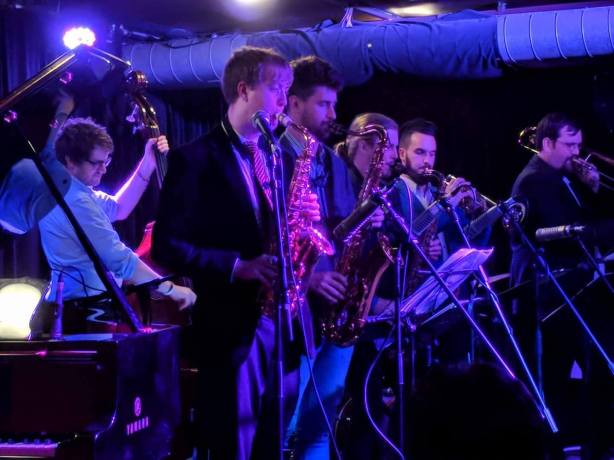The music of Thelonious Sphere Monk is a world of its own. So unique in jazz is Monk’s conception – both in composition and in improvisation – that it has pretty much carved out a sub-genre of its own.
Because of its unique language, it has proven down the years a notoriously difficult book to play. Some of the greats have struggled with its quirks and almost Zen-like mind-games: the staggered rhythms, the displaced phrases, the lines that seemingly go nowhere, only to bob up from rabbit-hole a few bars later. John Coltrane and Monk’s long-time foil, Charlie Rouse come to mind, but not too many others.
To improvise over Monk’s compositions – even a deceptively traditional blues such as ‘Blue Monk’ – demands an understanding of his highly personal logic. To move within that successfully, while not losing your own voice, is the grail.

Sydney altoist, Michael Griffin has put together a tribute to Monk’s music based around an octet Monk toured in 1968. Griffin’s octet (a very Monk word I think; as ‘quintet’ is a very Miles word) is made up of some of our best and brightest. I was fortunate to catch them at Sydney’s swish Foundry 616.
After the opener, the sweetly melancholic ‘Ruby, My Dear’ played by the quartet of Griffin, Aaron Blakey on piano and the rhythm section of Tim Geldens (drums) and Tom Botting (bass), Griffin brought out the horns. With ‘Epistrophy’ I knew Griffin has done his homework. He explained, mid-set, that he had voiced the horns based on transcriptions of Monk’s piano voicings. So all the harmonic quirks were there – the clashed seconds and flat-seconds, the clusters, the more open intervals such as sixths and ninths (Monk seemed to favour either very close or very open harmony) – and the effect was, like Monk himself, akin to nothing else in jazz.
The band swung through a nice mix of faves and obscurities – the gonzoid mis-steps of ‘Evidence’, the fractured bop of ‘We See’, a wonderfully driving ‘Off Minor’, the horns – Griffin plus Michael Gordon and Louis Gordon (2 tenors), with Paul Weber on trombone and Tom Avenicos on trumpet – sounding huge on ‘Oska T’ and almost Stravinsky-like on closer ‘Crepuscule with Nellie’.
The soloists all dug into the material with zest. Griffin’s smart selection of players afforded a range of approaches – Michael Gordon’s reflective tone and ideas, Louis (no relation) Gordon’s more biting attack, the sharp tone of Avenicos (a beautiful solo in ‘I Mean You’ where the piano laid out and the trumpet notes played contrapuntal tag with the rhythm section), Paul Weber’s blues-inflected voice-like lines.
Griffin’s Parker-classic alto flurries at times could seem at odds with the more open Monk ideas – serving as an illustration as to the immense differences between these two ‘architects’ of Bebop, Monk and Charlie Parker (as different as Frank Lloyd Wright and Gaudi, though I couldn’t say who was which). That said, his more lyrical side was the highpoint of ‘Blue Monk’, beautiful long blues lines and lovely phrase endings. But what the hell – he is one of our most exciting players whatever he does.
Someone who seemed to be having too much fun was pianist Aaron Blakey. And what jazz pianist wouldn’t with the Monk book? Resplendent in a wide Sonny Rollins hat, Blakely placed perfect ‘Monk bombs’ under the soloists and laid out for great gaps, shoring up the tension as Monk used to (though, I noted, without Monk’s sweet, abandoned dance movements around the piano). Blakey’s solos had an equal measure of his own sparkling ideas and some Zen-lunatic Monk humour. His solo-piano take on ‘Pannonica’ which opened the second set was another high-point in a night of highs.
If only to experience the wonderful, eternally-modern music of T S Monk you need to see this band. The fact that Michael Griffin has rendered such perfect arrangements, kept close and respectful to the spirit of Monk, and engaged such a killer ensemble makes it an essential to any fan of Jazz.


